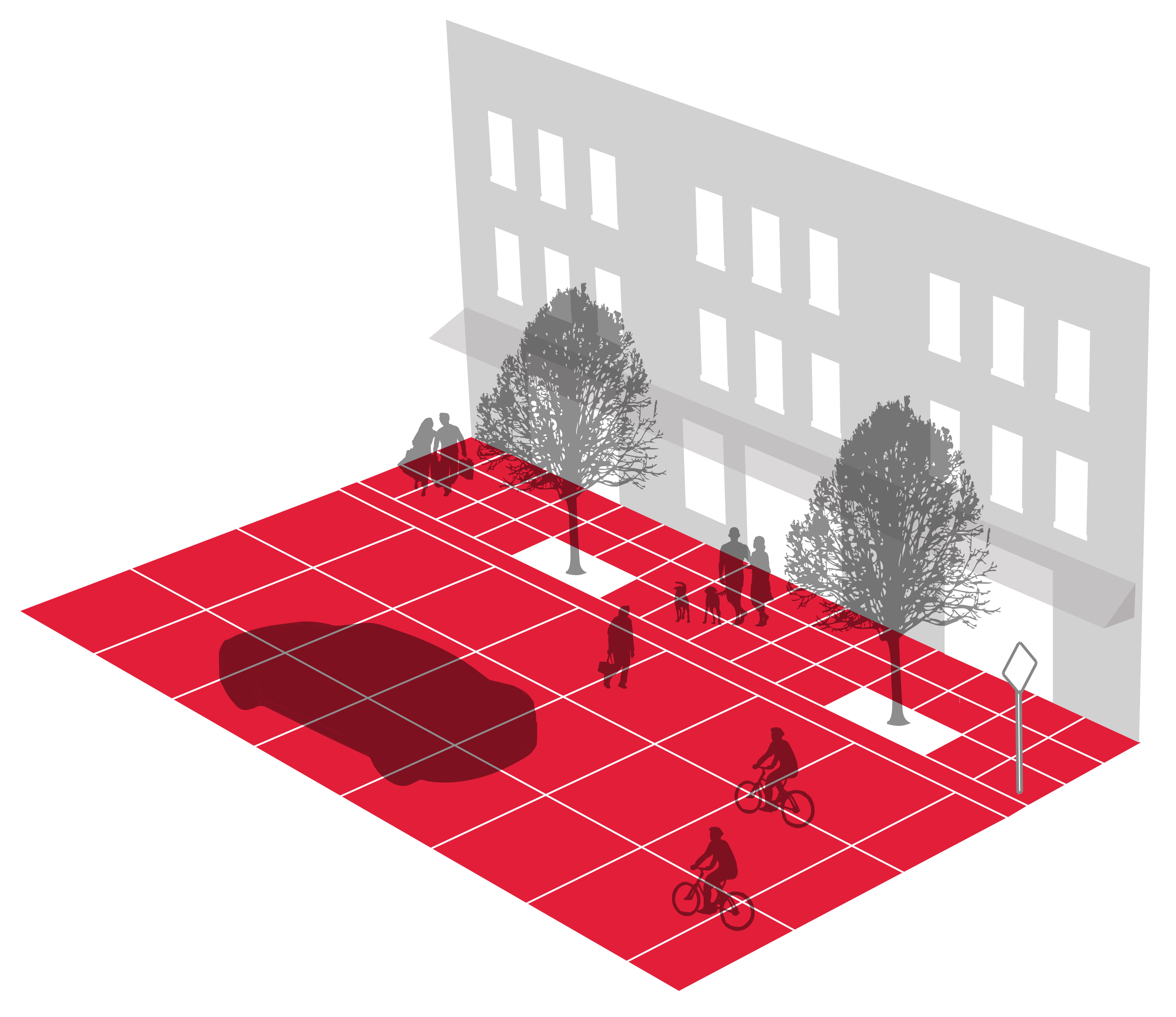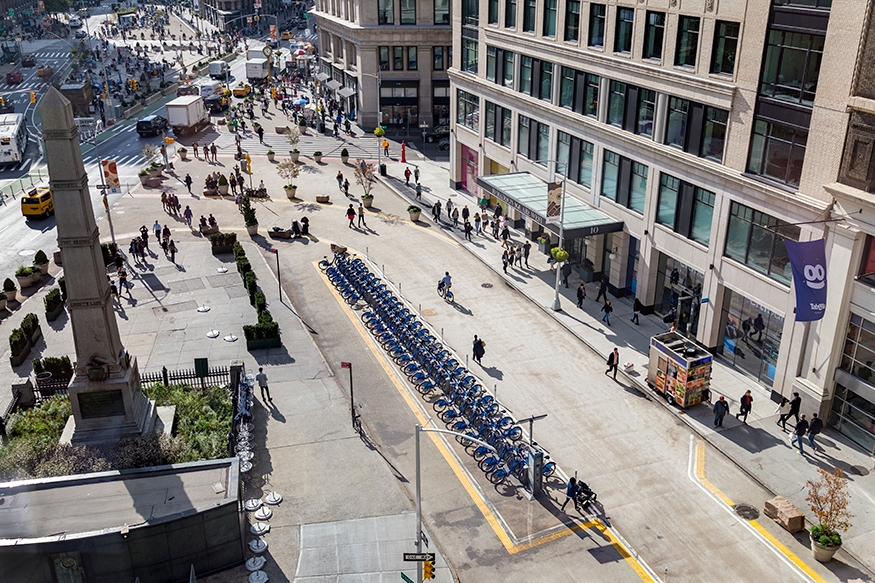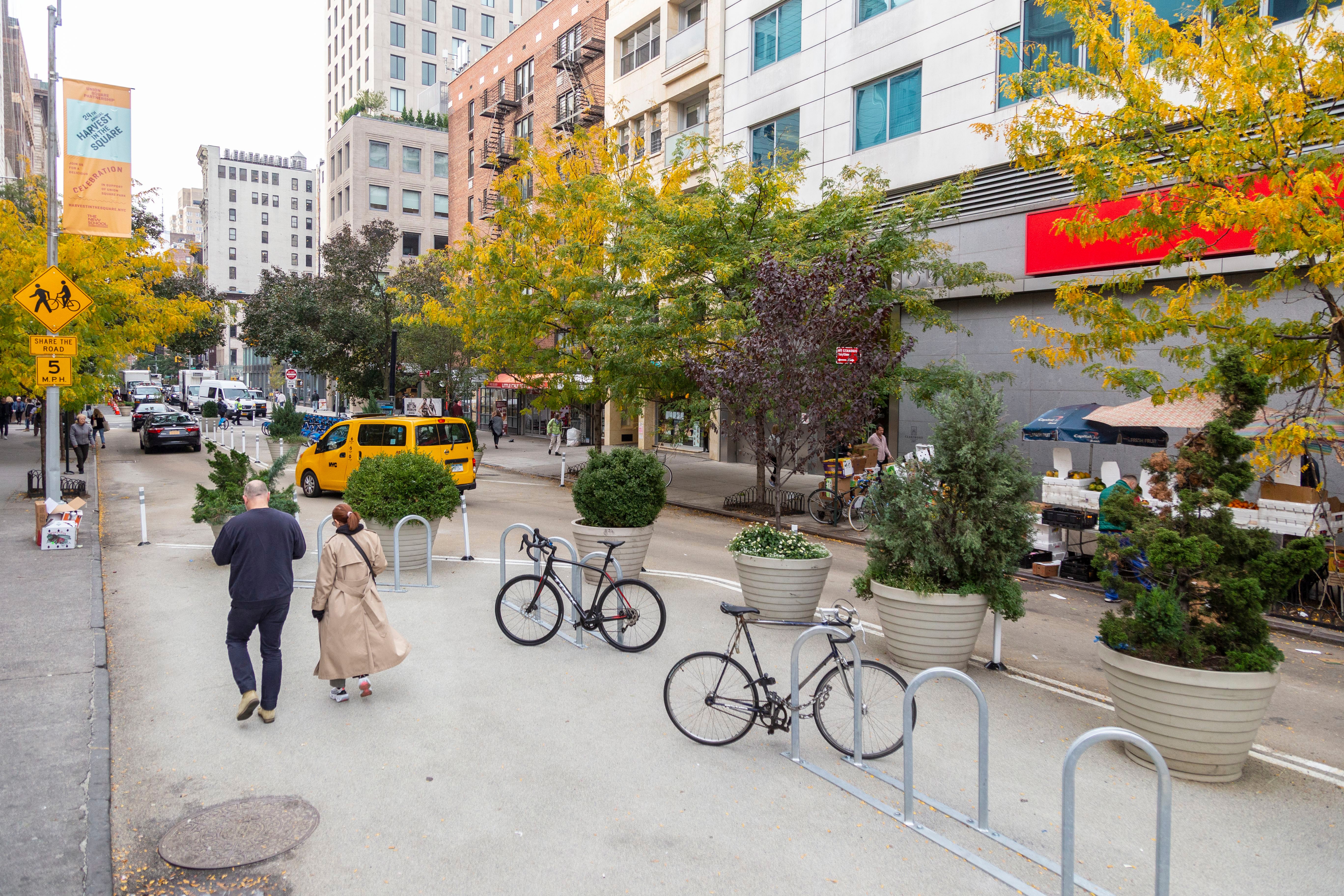Also known as a “pedestrian-priority” street, a shared street is a roadway designed for slow travel speeds where pedestrians, cyclists, and motorists all share the right of way. Typically employed on low vehicle volume and/or high pedestrian volume streets, vehicles are advised to drive 5 mph, and the roadway may be flush from building line to building line, separated by bollards or pedestrian amenities rather than the typical curb line grade separation. Slow speeds are encouraged through traffic calming, signage, and use of distinctive materials, furnishings, plantings, and other visual cues in the roadway that caution drivers. Street users generally negotiate the right-of-way cooperatively rather than relying on traffic controls, allowing the entire street to effectively function as a public space. Shared streets can be designed and managed in a variety of different ways to balance the needs of all users while enhancing the safety, aesthetics, and overall experience of the street.



Benefits
- Encourages freer pedestrian movement within pedestrian-dominated areas and to and from adjacent destinations
- Reduces sidewalk crowding on narrow streets
- Comfortable, attractive environment encourages “staying” activities such as relaxing, shopping, eating, and socializing, fostering a vibrant public realm
- Allows for a range of different management and operational parameters based on changing peak street users
- Design treatments, including street furniture and landscaping, prioritize pedestrian use while still allowing for local access
- Creates more space for event programming
Considerations
- Coordinate access for transit, buildings, loading, sanitation, and emergency services to facilitate daily operations
- Attention should be given to accommodation of and navigation by people with vision and cognitive disabilities
- May impact street drainage or require catch basin relocation
- May require loss of on-street parking
- Any public space amenity, such as street furniture or plantings, generally requires a maintenance agreement
- Coordinate streetscape/utility work to minimize street cuts
- May require pedestrian security measures
- Consider as an alternative to a fully pedestrianized street when pedestrian volumes are high, vehicle volumes are low, and vehicle access is not required during daytime hours
Application
- Consider on narrower streets (at most two moving lanes) or outer roadways of boulevard-type streets, with little or no through traffic, and which are not major vehicular or cyclist through routes or designated truck routes
- Consider on streets adjacent to major pedestrian destinations, where vehicle volumes are low and pedestrian desire lines are diffuse (i.e., pedestrians would like to cross the street in many places)
- Consider on local residential streets whose design priority is to allow safe use of street space for recreational activities and green space, in partnership with residents or neighborhood groups
Design
- Curbs should be avoided, but pedestrian paths of travel alongside vehicle zones should be provided for people with ambulatory, vision, and cognitive disabilities
- Guideways using tactile cues and maximum visual contrast should be included for people with vision disabilities
- In the absence of curbs, special attention should be given to providing adequate drainage
- Institute an advisory reduced speed of 5 mph (New York State VTL Section 1642(a)(26) and (27) allow actual enforceable speed limits as low as 15 mph) along with the physical traffic calming of the shared street
- Design should utilize whatever horizontal, vertical, and material treatments are necessary to encourage low vehicle speeds throughout, whether or not pedestrians are present
- Use Gateway or similar treatments and proper signage at entries to discourage through traffic, indicate the change in street environment, and slow entering vehicles
- Attractive street materials, furnishings, and other objects within the street can be used to alert drivers and emphasize the pedestrian orientation of the space, subject to permits, maintenance agreements, or revocable consents as required
- DOT standard concrete is appropriate for the portion of the shared street intended for vehicles
- Include planted areas and stormwater source controls within the roadway where possible. See Stormwater Management Practices in the Landscape chapter
- Staggered sections of parking or loading zones can be used as a design option to constrict wider streets
- To maintain the streetscape elements required for creating a low-speed environment and fostering a vibrant public space, careful attention should be paid to proper programming and management of the space, with the participation of an active maintenance partner where appropriate
- Maximize trees and other green cover. See Tree Beds and Roadway Plantings in the Landscape chapter
- Utilize recycled content in paving materials


